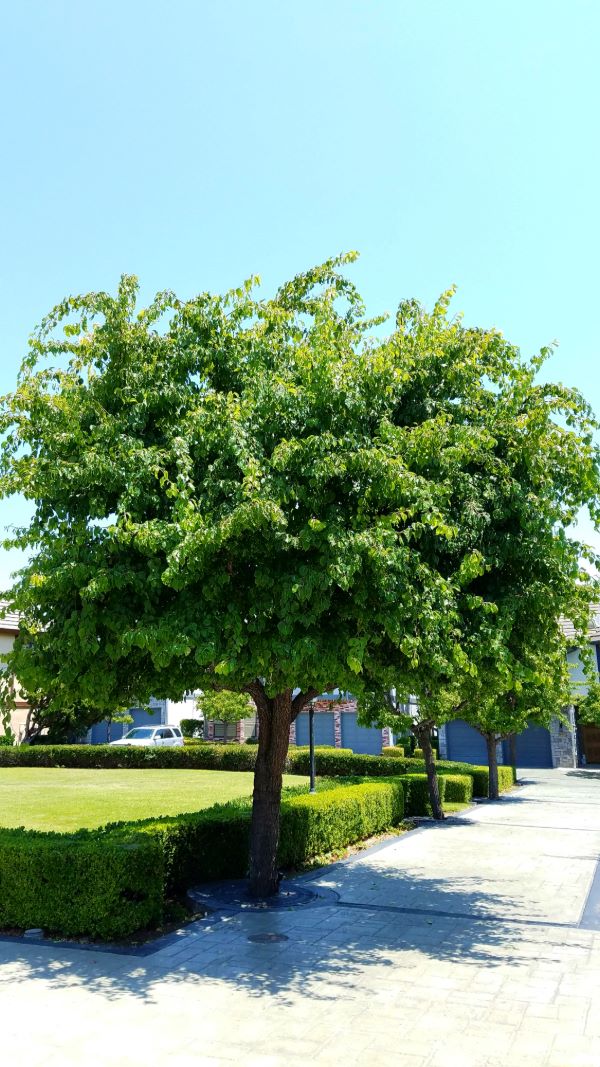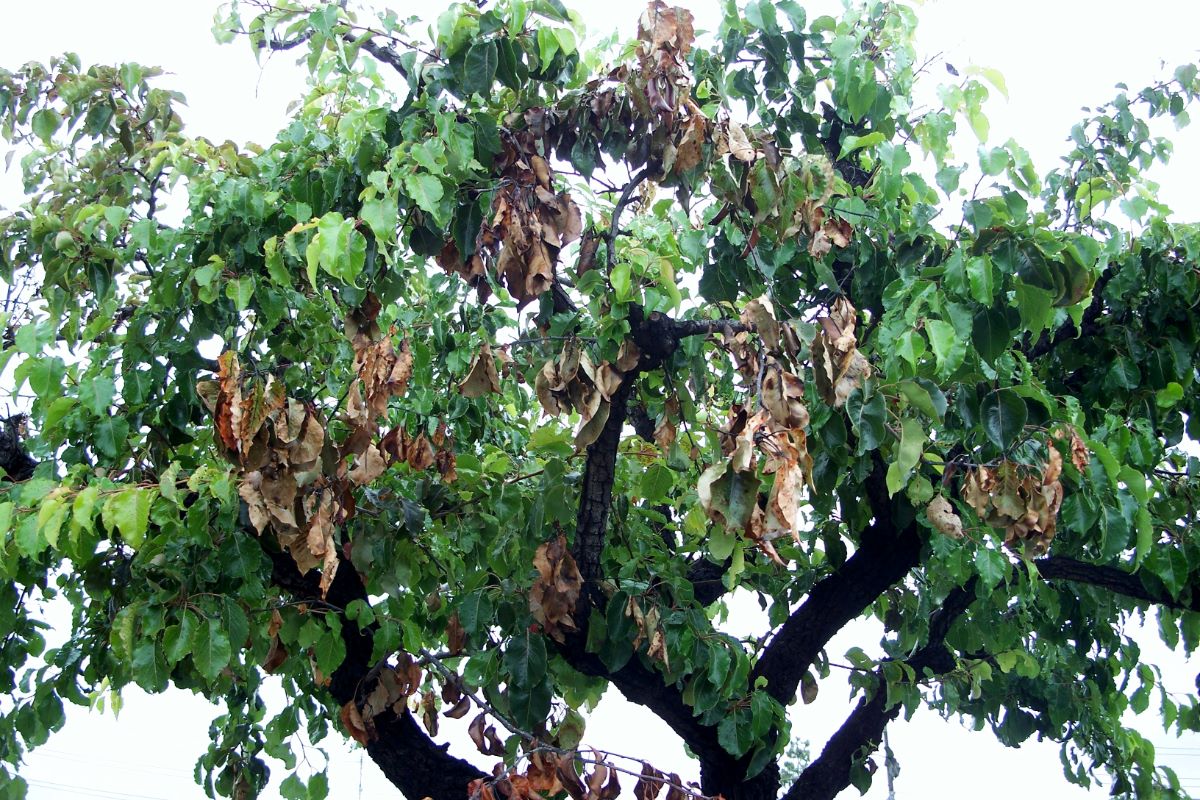What is Fire Blight?
Fire Blight is a very common bacterial infection caused by Erwinia amylovora, which affects Pear trees and can rapidly spread when conditions are right for disease development. The bacteria will cause sudden wilting, shriveling and blackening of shoots, blossoms, and limbs giving the tree a scorched appearance.
Infection will extend into the twigs and branches, causing small shoots to turn black and wilt. Blackened necrotic leaves cling to branches throughout the season giving the tree a scorched appearance hence the name “Fire Blight”.
Bacterial infection will continue to extend and spread throughout the limbs and into the trunk. Once wood is infected, cankers will develop and continue to survive and spread throughout the tree.
The images show a healthy pear tree on the left and infected tree with fire blight on the right.



Information to Know
Open flowers are the most common infection site and remain susceptible until petal fall. Infected limbs will spread bacteria to new incoming flowers and blossoms, making it possible to spread by insects (ants, bees), and splashing rain to other surrounding trees. Bacterial infection will systemically spread throughout the shoots and continue to infect the tree as it declines or until the wood is physically removed.
The disease enters the tree at the tips of the branches and then travels down the stems causing dieback. It attacks soft new growth first, noticeable dieback can be found within the canopy of the tree. Most infected leaves and branch tips wilt rapidly turning black/brown in color causing the leaves to die but do not drop off.
Prevention & Treatment
Along with proper pruning, fire blight is best managed with preventative treatments made prior to blight infections during the pear tree’s “open flower” period.
Prevention treatment window: January‐March
Removing any infected branches 8-12 inches into the healthy wood before trees begin to flower is suggested for optimal results.
Trees with heavy “scorch” bacterial blight may need 2-3 consecutive seasons of pruning and treating before blight infections are corrected. Treatment will help manage and limit new infections, old infections must be physically removed.
Get an early start by having your trees examined during Fall to set up an annual treatment for your pear trees in January-March.


